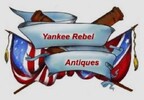 Loading... Please wait...
Loading... Please wait...-
Call us on (973) 810-2976
- My Account
- Gift Certificates
- Items / $0.00
All prices are in All prices are in USD
Categories
- Home
- Artillery related items
- RARE – Section of French & Indian War Artillery Bar shot, recovered at Ft. Henry, NY
- Home
- Identified Artifacts
- RARE – Section of French & Indian War Artillery Bar shot, recovered at Ft. Henry, NY
- Home
- Excavated Artifacts
- RARE – Section of French & Indian War Artillery Bar shot, recovered at Ft. Henry, NY
- Home
- Late 18th Century / Early 19th Century
- RARE – Section of French & Indian War Artillery Bar shot, recovered at Ft. Henry, NY
- Home
- Revolutionary War items
- RARE – Section of French & Indian War Artillery Bar shot, recovered at Ft. Henry, NY
- Home
- REVOLUTIONARY WAR ARTILLERY
- RARE – Section of French & Indian War Artillery Bar shot, recovered at Ft. Henry, NY
RARE – Section of French & Indian War Artillery Bar shot, recovered at Ft. Henry, NY
Product Description
This is really a great piece being offered, it is one of the ends of a French & Indian War bar shot. It has a diameter of 2 1/8” and weighs 1-pound, 3-ounces. It is one that was fired from a 2-pounder cannon and has the flat side where it had broken off. It was recovered years ago at Fort William Henry, NY (see pictures).
Fort William Henry was a British fort at the southern end of Lake George, in the province of New York. The fort's construction was ordered by Sir William Johnson in September 1755, during the French and Indian War, as a staging ground for attacks against the French position at Fort St. Frédéric.
It was part of a chain of British and French forts along the important inland waterway from New York City to Montreal and occupied a key forward location on the frontier between New York and New France.
In 1757, the French general Louis-Joseph de Montcalm conducted a successful siege that forced the British to surrender. The Huron warriors who accompanied the French army subsequently killed many of the British prisoners. The siege and massacre were portrayed in James Fenimore Cooper's novel The Last of the Mohicans.
Bar shot was a type of cannon projectile consisting of an iron bar with two cannonballs, two cannonball halves, or one solid piece with the ends increasing in size to fit in the cannon barrel.
Bar shot was particularly effective at close range, where its tumbling motion could cut through rigging and sails. While less accurate than round shot at longer ranges, bar shot was used to target masts, sails, and other rigging, which were crucial for a ship's maneuverability and control. The spinning and tumbling motion of bar shot made it ideal for tearing through thick sails, wooden hulls, and large sailing masts. They also had devastating results when used against ground troops.
The bar shot has overall surface rust, but no chipping or flaking. There are examples in The Revolutionary War Museum and in “Collector’s Illustrated Encyclopedia of the American Revolution”, by Neumann & Kravic (see pictures). It comes in the acrylic display case pictured.




